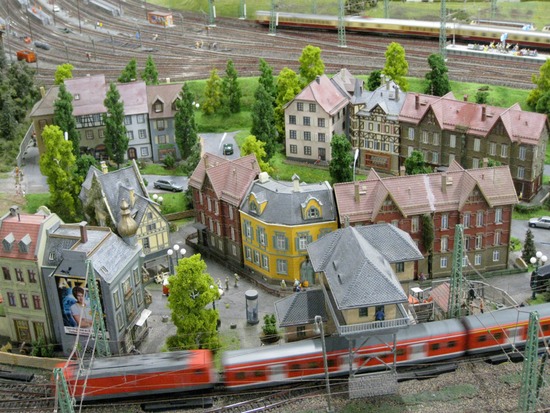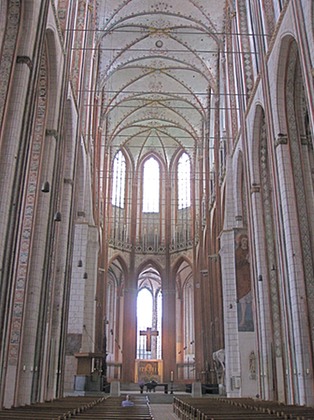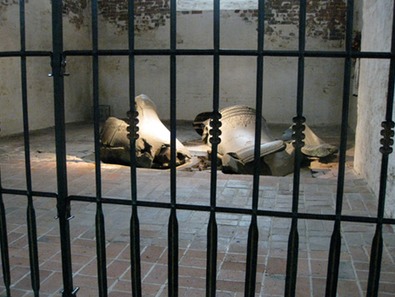The traffic on the autobahn to Hamburg came to a dead stop about 5 miles from our exit. Next to us, a woman rolled down her window and, in pretty good English, asked where in Minnesota we were from. “Minneapolis,” we told her; she said, “ That’s where our son lives!”
The GPS gave us a detour that everyone else seemed to be taking, so we abandoned the A in favor of city streets, inching along . . . to the world’s tightest campground: basically a driveway with about 15 spaces, each 12 feet wide, along each side. Somehow David managed to back Rover in, and we settled down with quiet neighbors on both sides.
We were a long bus ride from Hamburg central city, and during our visit the bus and subway systems conspired to do us in. But we found a wonderful photographic exhibit by Steve McCurry of the National Geographic magazine, another magnificent church (this one the largest Protestant church in northern Germany) and then, to top it off, a massive miniature train display that went on for a block and a couple of floors in an old warehouse complex. It came complete with planes landing and taking off and night coming and going with all the buildings and vehicle lights coming on. One of the thousands of features was a rock concert attended by 20,000 tiny people. It had everything, and every tourist in town came to see it--some with their dogs.

We found a little restaurant near our second chocolate factory before we took two subway trains and a bus back to our campsite. In the morning the campground manager pulled a post out of the ground to help us turn out of our spot and drive away. The posts were designed to do that, so we apparently aren’t the first 24’ vehicle they have had to accommodate.
We faced some of the same traffic getting out of the city, and our GPS pulled a fast one on us in Lübeck: there was a detour right at our exit, and it chose to lead us in a very roundabout way to our very nice grassy campground.
Like Hamburg, Lübeck is a mix of old and new side by side. So much of these cities were destroyed during the war that it is obvious what survived and what has been rebuilt. Lübeck’s 13th century Marienkirche, the third largest in Germany, has high vaulted ceilings and twin steeples that rise nearly 400 feet. The bell tower was among parts of the church that was destroyed during bombing in WWII, and when the church was rebuilt the bells were left, as a monument, where they had fallen.


(Then, for a complete change of pace, we also visited a puppet museum with a surprisingly large collection.)
We are in what was East Germany. Little evidence of it remains, but as we left Lübeck we drove by a very new airport from which we had seen some fighter jets flying in formation. Nearby were several old concrete barrack-like buildings, and at our next campground a quonset hut was doing duty as a restaurant.
We haven’t had rain since we left Sweden. Some farms in Denmark were irrigating their fields. But we are enjoying this beautiful weather and now that we are much further south we are also enjoying longer, darker nights.